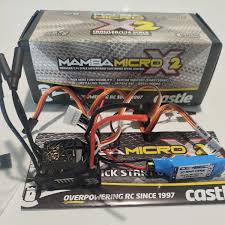The Ultimate Guide to RC Electronics and Bodies
When it comes to enhancing the performance and aesthetics of your radio-controlled (RC) car, choosing the right electronics and bodies is crucial. These components not only determine how your vehicle functions but also play a significant role in its appearance on the track. Let’s delve into the world of RC electronics and bodies to understand their importance and how they can take your racing experience to the next level.
RC Electronics: Powering Performance
RC electronics encompass a wide range of components that power your vehicle, control its movements, and enhance its capabilities. From motor systems and speed controllers to receivers and servos, each electronic part plays a vital role in determining how your RC car performs on the track.
Modern RC electronics are designed to deliver optimal power output, precise control, and smooth operation. Whether you’re looking to achieve lightning-fast speeds or navigate tight corners with precision, choosing high-quality electronics is essential for maximising your car’s performance potential.
RC Bodies: Style Meets Functionality
RC bodies are not just about looks – they also serve practical purposes that can impact your racing experience. The body of your RC car not only enhances its visual appeal but also influences its aerodynamics and handling characteristics on the track.
Choosing the right body for your RC car involves considering factors such as weight distribution, downforce, and airflow management. Sleek, aerodynamically designed bodies can help improve speed and stability during races, giving you a competitive edge over other drivers.
Finding the Perfect Balance
When it comes to selecting RC electronics and bodies for your vehicle, finding the perfect balance between performance and aesthetics is key. Investing in high-quality electronics that deliver consistent power and control is essential for achieving peak performance on the track.
Likewise, choosing a well-designed body that complements your car’s performance capabilities can enhance both its visual appeal and racing prowess. By carefully selecting the right combination of electronics and bodies, you can customise your RC car to suit your driving style and race conditions.
Conclusion
RC electronics and bodies play a crucial role in shaping the performance and appearance of your radio-controlled car. By understanding their importance and selecting components that meet your specific needs, you can elevate your racing experience to new heights. Whether you’re aiming for speed, agility, or style, investing in high-quality electronics and bodies is essential for maximising your RC car’s potential on the track.
Understanding RC Electronics: Definitions and Explanations
What does RC stand for electronics?
In the world of radio-controlled (RC) cars, the abbreviation “RC” stands for “radio-controlled.” When referring to RC electronics, it indicates that the components are designed to be controlled remotely using a radio transmitter. These electronics include a wide range of parts such as receivers, speed controllers, and servos that enable users to wirelessly operate and control their RC vehicles with precision. Understanding the significance of “RC” in electronics is essential for enthusiasts looking to delve into the exciting realm of remote-controlled racing.
What is RC electronic?
When enthusiasts ask, “What is RC electronics?” in the context of radio-controlled cars, they are referring to the essential components that power and control the vehicle. RC electronics encompass a range of devices such as motor systems, speed controllers, receivers, and servos that work together to drive the car and enable precise manoeuvring. These electronic components are crucial for determining the performance capabilities of an RC car, from speed and acceleration to handling and responsiveness on the track. Understanding the role of RC electronics is key to optimising the performance and functionality of a radio-controlled vehicle.

